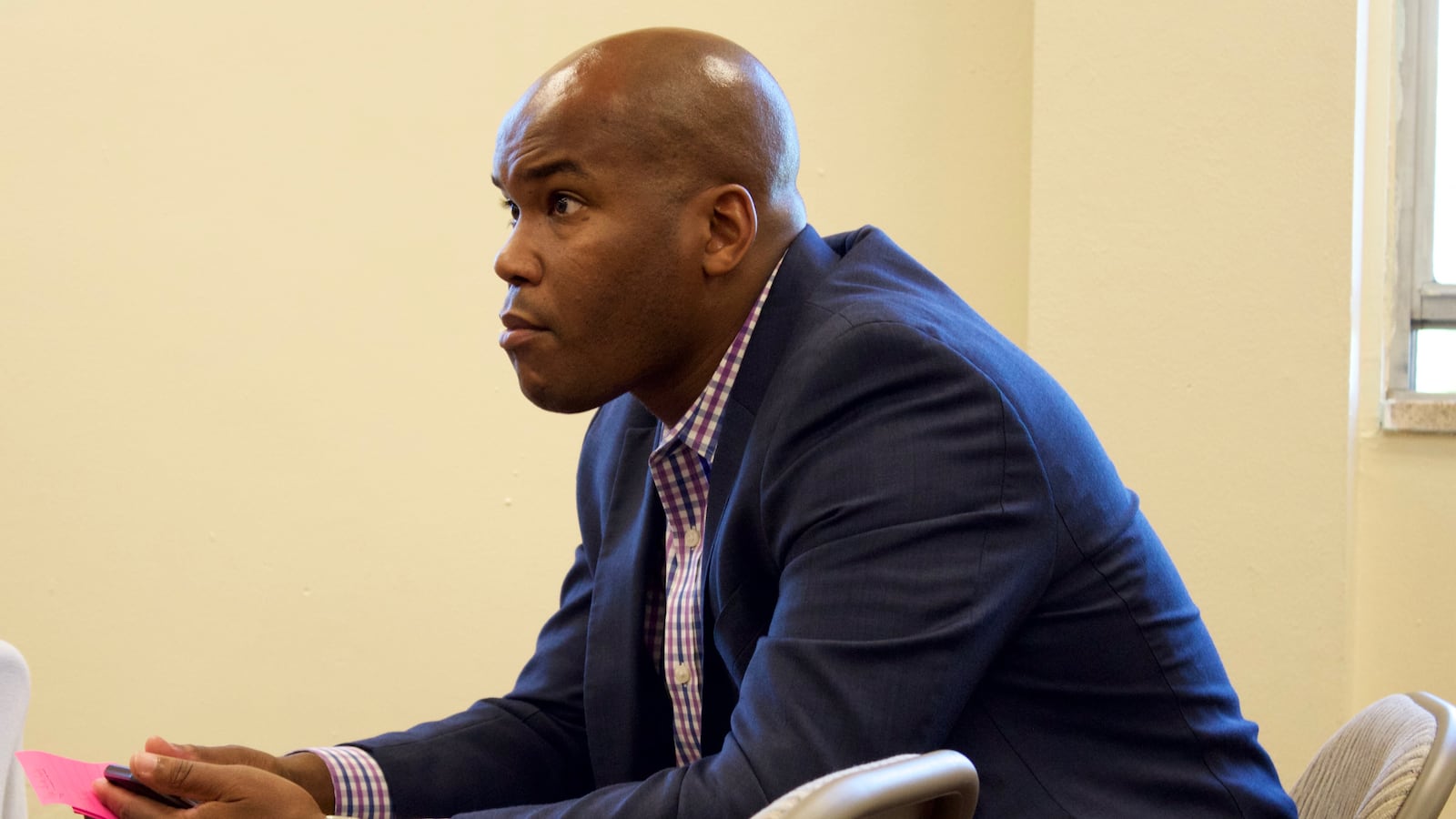When Aurora West College Preparatory Academy student Daniela Varela was helping vet principal candidates over the summer, she was impressed with how Taisiya “Taya” Tselolikhina emphasized the importance of building relationships with students.
On Tuesday, she saw that translate to action, as Tselolikhina introduced herself to students in the cafeteria or helped newcomers figure out their lockers and student ID numbers.
“It’s only the second day of school,” said Varela, a 16-year-old junior. “But she’s really getting involved with all the kids.”
Varela was more than an interested onlooker. She was part of a group of more than two-dozen people who helped pick Tselolikhina in a process made possible by new flexibility Aurora West and four other Aurora schools have as part of the district’s “innovation zone.” The status gives each school more autonomy from district rules and processes, including for hiring.
Although it’s common for students, parents and community members to play a role in selecting a school leader, the extent of this group’s involvement — outlining what candidates must do and questions they must answer during the process — is unusual.
By involving more people, Aurora school district officials hope to instill more confidence in the choice. It’s one way officials can use the flexibility that comes with innovation status to attempt to lift student achievement.
Aurora West, a sixth through 12th grade school with about 1,200 students, adopted a plan for school improvement under innovation status that included plans to change curriculum to better align the middle and high school, improve the development of English language learning, and plans to add social and emotional supports, among other changes.
Although the innovation zone started more than a year ago, a process for replacing a principal hadn’t been created until now, with the model developed for Aurora West.
It was on the last day of the 2016-17 school year that school staff learned they would need a new principal, with the departure of Brian Duwe.
Lamont Browne, the district’s director of autonomous schools, met with school staff and asked how they wanted to be involved, and what characteristics they wanted in a leader.
Feedback from staff and students was used to design questions and vet applications. School staff asked Browne’s office to review all applications and then introduce them to just a few good candidates to put through a series of interviews.
Then almost two dozen volunteers — including students, parents, teachers from each content and every grade level, staff and administrators — spent several hours over the summer working through the process and interviews.
“It was an honor to be included,” said Kandi Cantley, the school bookkeeper who said she had never been a part of a hiring process before. “I loved how the kids were involved, and their parents, and that it wasn’t just a sit-down interview. There were very different aspects to it.”
The process first included separate group interviews with students and parents, administrators, and with teachers. Candidates also had to lead a teacher training session and look at school data — about attendance, behavior or academics — and talk to a group of the committee about how the data should be analyzed and used to plan changes for the school.
But after observing candidates in those various roles, committee members met to talk and decided they wanted to know more. So they talked to district officials about adding another step.
“We met as a committee and we talked about what more information did we want to learn about the candidate that we were interested in,” said Jessica Rodriguez, an assistant principal who was part of the committee. “Together we typed up some questions as well as provided data that we wanted to hear her analyze and talk about.”
In the added step the committee designed, Tselolikhina had to do a mock session coaching a teacher. Browne gave her feedback and the committee members watched how she used it to adjust her coaching. Browne said he always looks for leaders who can use feedback to improve, but was glad that the group developed this way of seeing it in action.
“That’s what I appreciated,” said Tushar Rae, dean of instruction. “You got to see a candidate in several different realms.”
In the end, the committee members didn’t hold a vote, but provided Browne feedback for each of the candidates.
“The beauty of the process is that there were different steps that different people got to see,” Browne said. “At the end of the day I got to hear all the perspectives and take all that into account. Certainly I had a perspective of my own. Fortunately it matched what everyone else suggested.”
Tselolikhina, who had never been a principal before, said she applied for the job to be closer to where policy changes are applied. She previously was the manager of the professional learning center for Denver Public Schools, which plans teacher and staff training.
“The chance to have direct influence over students who deserve better access to equity is such an opportunity,” Tselolikhina said. “Here our actions and the dedication that this team puts in directly influences the lives of students every day.”
Tselolikhina said she used to live in the neighborhood, just eight minutes away from the school. She has goals of improving teacher instruction through data and through better planning, and decreasing student suspensions and expulsions by improving student relationships.
“I believe in her,” said Rodriguez, the assistant principal on the committee.


